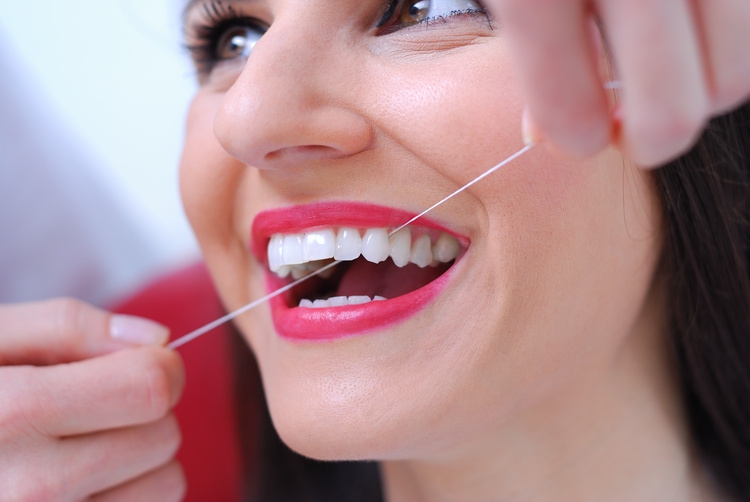Effective use of dental floss

Cleaning teeth with floss is a part of good oral hygiene. With a toothbrush you clean only 65% of the tooth surfaces. The remaining 35% are mainly interdental areas and they are only available for dental floss.
Dental floss is a thin, soft string, which is used to clean the spaces between teeth. The strings are usually nylon, can be waxed and unwaxed, with a taste or tasteless, in the form of bands or threads. The choice of flosses is largely a matter of personal choice and a recommendation of the dentist.
Brushing teeth, cleaning with a floss, a healthy diet and regular preventive dental check-ups are necessary for your healthy smile.
Why is it important to use a floss?
- Removes mechanically food remains;
- Removes plaque between teeth where a toothbrush can not reach;
- Prevents tooth decay and gum disease (gingivitis, periodontitis);
- Along with brushing teeth prevents bad breath;
Flossing technique
- Detach sting, which is 40-45 cm long and wind it around the middle fingers of each hand.
- Hold the thread between your thumb and forefinger and leave space between 2-3 cm.
- Carefully insert the thread into the interdental space with forward and backward movements. If the contact between two teeth is strong, you may need to use some pressure to overcome the contact point. Be careful not to damage the crown.
- Pull the thread on the side of one of the two teeth. So the thread winds in the form of "C" and can clean a maximum area of the tooth.
- Gently clean the tooth surface above and below the gum line
- Repeat with the next tooth side.
- Remove the thread and repeat for all interdental spaces to the last tooth in the upper and lower jaw.
- Rinse your mouth with mouthwash to remove cleaned food.
- If you notice a problem (ruptured floss between the teeth for example), visit your dentist.
How often should the floss be used?
Clean your teeth with a floss at least once a day, as necessary the cleaning should be in bedtime.
What happen if I don’t floss?
- Unremoved in the interdental space plaque turns into dental calculus.
- Over time, the amount of 'hazardous' bacteria increases, resulting in inflammation of the gums (gingivitis). If gingivitis is not treated, it might progress to periodontitis.
- The risk of caries increases
Remember: Brushing teeth, cleaning with a floss, a healthy diet and regular preventive dental check-ups are necessary for your healthy smile.
